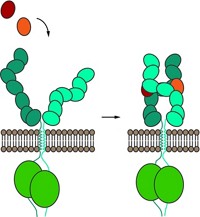Advertisement
Grab your lab coat. Let's get started
Welcome!
Welcome!
Create an account below to get 6 C&EN articles per month, receive newsletters and more - all free.
It seems this is your first time logging in online. Please enter the following information to continue.
As an ACS member you automatically get access to this site. All we need is few more details to create your reading experience.
Not you? Sign in with a different account.
Not you? Sign in with a different account.
ERROR 1
ERROR 1
ERROR 2
ERROR 2
ERROR 2
ERROR 2
ERROR 2
Password and Confirm password must match.
If you have an ACS member number, please enter it here so we can link this account to your membership. (optional)
ERROR 2
ACS values your privacy. By submitting your information, you are gaining access to C&EN and subscribing to our weekly newsletter. We use the information you provide to make your reading experience better, and we will never sell your data to third party members.
Biological Chemistry
Hobbling neuron receptors
April 16, 2007
| A version of this story appeared in
Volume 85, Issue 16
Efforts to determine the roles of two related neuronal receptors should get a boost from recent discoveries at the University of California, San Francisco. Glutamate-activated ion channels known as AMPA receptors play a central role in processes related to learning and memory. But attempts to differentiate between the functions of two types of these receptors have produced conflicting results so far. A better handle on the receptors' behavior should be forthcoming now that Aaron Nilsen and Pamela M. England have found that philanthotoxin-7,4 (shown) selectively inhibits the activity of just one of the receptor types (J. Am. Chem. Soc. 2007, 129, 4902). The UCSF duo determined that differences in the carboxyl ends of subunits within the two receptors give rise to overall structural differences that affect the receptors' relative affinity for the inhibitor. Nilsen and England's approach to synthesizing the compound—an analog of a wasp venom toxin—more than doubles the yield previously achieved by another research group.





Join the conversation
Contact the reporter
Submit a Letter to the Editor for publication
Engage with us on Twitter